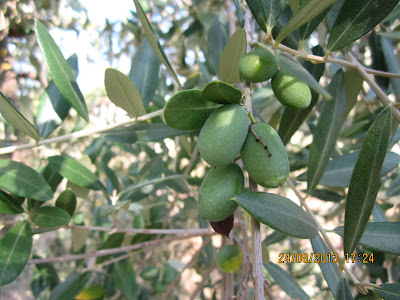There
are six natural subspecies of Olea europaea distributed over a wide range :
1.
Olea europaea subsp. europaea ( Mediterranean Basin )
2.
Olea europaea subsp. cuspidata ( from South Africa throughout
East Africa, Arabia to South West China )
3.
Olea europaea subsp. guanchica ( Canaries )
4.
Olea europaea subsp. cerasiformis ( Madeira ) ( tetraploid )
5.
Olea europaea subsp. maroccana ( Morocco ) ( hexaploid )
6.
Olea europaea subsp. laperrinei ( Algeria, Sudan, Niger )
Though,
there are thousands of cultivars of the Olea
europaea.
Olive
tree is very hardy. They are drought-,
disease-, and fire-resistant. The root
system is capable to regenerate even if the above-ground structure is
destroyed. It is therefore many olive
trees are said to be hundred of years old. A few were claimed to be over one or two
thousand years old.
The
olive tree are cultivated for olive oil, fine wood, olive leaf and the olive
fruit. Olive oil
is produced by grinding olives and extracting the oil mechanically or chemically.
Italy alone, produced over 15% of world’s
olive oil. Olive leaves are used for its medicinal
properties.
Interestingly,
olives are harvested by shaking the bough or the whole tree. Net are wrap around the trunk to catch the
fallen fruits. Table olive are
hand-picked. Bruised fruits tend to be
inferior quality.
Fresh
olives are not palatable as they contain oleuropein, which make them bitter ;
and phenolic compounds They are cured
with lye, brine or fresh water to make them more palatable. Oleuropein
is removed by soaking in fresh water or brine. Most olives will be allowed to ferment before
being packed in brine solution. Olives can
be flavoured by soaking in a marinade or pitted and stuffed.

No comments:
Post a Comment